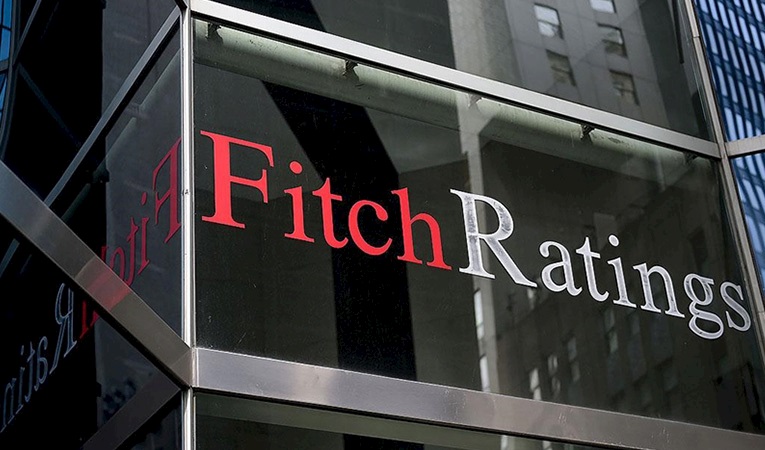
-
BIST 100
 10914,10%0,00En Düşük10871,84En Yüksek11083,34
10914,10%0,00En Düşük10871,84En Yüksek11083,34 -
DOLAR
 42,09%-0,01Alış42,0818Satış42,0940En Yüksek42,0945
42,09%-0,01Alış42,0818Satış42,0940En Yüksek42,0945 -
EURO
 48,41%0,12Alış48,4040Satış48,4231En Yüksek48,4314
48,41%0,12Alış48,4040Satış48,4231En Yüksek48,4314 -
EUR/USD
 1,15%0,12Alış1,1493Satış1,1494En Yüksek1,1500
1,15%0,12Alış1,1493Satış1,1494En Yüksek1,1500 -
ALTIN
 5329,21%-0,02Alış5328,44Satış5329,99En Yüksek5343,74
5329,21%-0,02Alış5328,44Satış5329,99En Yüksek5343,74
-
BIST 100
 10914,10%0,00En Düşük10871,84En Yüksek11083,34
10914,10%0,00En Düşük10871,84En Yüksek11083,34 -
DOLAR
 42,09%-0,01Alış42,0818Satış42,0940En Yüksek42,0945
42,09%-0,01Alış42,0818Satış42,0940En Yüksek42,0945 -
EURO
 48,41%0,12Alış48,4040Satış48,4231En Yüksek48,4314
48,41%0,12Alış48,4040Satış48,4231En Yüksek48,4314 -
EUR/USD
 1,15%0,12Alış1,1493Satış1,1494En Yüksek1,1500
1,15%0,12Alış1,1493Satış1,1494En Yüksek1,1500 -
ALTIN
 5329,21%-0,02Alış5328,44Satış5329,99En Yüksek5343,74
5329,21%-0,02Alış5328,44Satış5329,99En Yüksek5343,74
- Anasayfa
- Haberler
- Tüm Haberler
- An era without hikes?
An era without hikes?
This trend has reached striking proportions in all areas from clothing to white goods, furniture and fast moving consumer goods.
1.01.2013 00:00:000

Ten years ago, companies used to raise prices more than twice a year. Today, on average, they can increase them once a year. In many sectors there are virtually no hikes at all. It has reached the point where, even if the cost of raw materials rises, companies try to avoid price hikes through productivity and savings. So will this tempo continue? The information coming from companies suggests that this low frequency will continue. Many companies have no plans for any hikes in 2013. One of the first innovations of Tesco Kipa’s new CEO Jeff Adams was to reduce the prices of nearly 1,000 products on the shelves. This move, which started at the beginning of November, resulted in the supermarket chain reducing prices by an average of 15 percent and trying to ease the effect of inflation on customers. Indeed in 2012, many companies reduced both the rate of price increases and the frequency with which they raised prices. This trend has reached striking proportions in all areas from clothing to white goods, furniture and fast moving consumer goods. P&G Türkiye CEO Saffet Karpat says: “The frequency of price increases in Turkey has declined considerably. When we look at the fast moving consumer goods sector, in some categories prices are increased once a year while in others they are not raised at all. We implement price increases less frequently than we did in the past.” Orka Group Board Chair Süleyman Orakçıoğlu agrees with Karpat. Orakçıoğlu stresses that they did not raise prices at all throughout 2012. “In order to increase or preserve market share, you need to apply not cheap but clever prices,” he says.
Click image to see the table

PRICES INCREASES HAVE DECLINED
Ten years ago, companies used to raise prices at least 2-3 times a year. Today this figure has fallen to 0-1 in some sectors. The best example of this is in the foodstuffs sector. Papağan Kuruyemiş General Manager Rüstem Karakaya recalls that ten years ago in the dried fruit and nuts sector price rises were applied 2-3 times a month. This year the company raised prices on different goods once each. This trend can also been seen in the furniture sector. Sihir Mobilya Board Chair Murat Çermik says: “This year, and in fact last year as well, we did not raise prices at all. Although we needed to do so, we did not, but postponed the hikes through implementing savings measures.” Arzum Board Chair Murat Kolbaşı says: “After the 2001 crisis there were times when, because of high inflation or the changing exchange rate, we implemented price changes 6-7 times a year.”
WHY HAS THE FREQUENCY DECLINED?
So why has there been a decline in the frequency with which prices are raised? The most important reason for the fall is undoubtedly inflation. In the past, all products were affected by inflation and their prices were raised every month. P&G Türkiye General Manager Saffet Karpat explains: “The reason for the fall in the frequency of price hikes is that the rate of inflation is not as high as before. For reasons such as us having more stable economy and the appreciation of the Turkish Lira we do not need to increase prices any more.” Another reason for the decline in the frequency of price hikes is the intense competition. In many sectors, competing on price is reducing the frequency of hikes. That is to say, there is considerable competitive pressure on prices. Increases in the cost of raw materials are inevitably reflected in prices. But companies still prefer to reduce price hikes through savings, such as cost cutting measures and increasing productivity.~
WILL THE DECLINE CONTINUE?
The fall in inflation to below 10 percent has increased quality and competition in every area. But consumers have become more sensitive when it comes to price increases. Sihir Mobilya Board Chair Murat Çermik says: “It is now impossible to apply unbalanced and untimely price hikes.” All of these factors are making price increases in Turkey more balanced, just as they are in developed countries. The frequency of price hikes is now one or twice a year and it is expected to remain at the same rate as in 2012 for the next 2-3 years. Arzum Board Chair Murat Kolbaşı expresses his views as follows: “We think that it will continue at this low frequency. There may be increases in six monthly intervals, at the beginning of new seasons.” Hakan Koçer, who is general manager of Homend, another leading company in small household appliances, agrees with Kolbaşı. “If we consider that consumers receive wage increases once a year then an increase in commodity prices once a year in line with inflation will not create problems.”
COMPETITION ACTS AS A BRAKE
In order not to lose customers, and thus market share, companies try either to avoid any price hikes at all or to keep them at a low rate. Asus Türkiye Regional Manager Bora Aras says: “The competitive environment determines prices. Even if your costs increase, if competition requires it, then there are situations when you take a loss and don’t raise prices.” Before they raise prices, companies try to shoulder as many costs as they can. Homend General Manager Hakan Koçer says: “We only raise prices if our product profit margin remains under our target for three months in a row. For example, this year we only reflected an increase in tax of 10-20 percent in the prices of electrical vacuum cleaners. We did not introduce any other hikes. We are thinking of applying price increases in accordance with the rate of inflation at the end of the year.” In the same way, Arzum Board Chair Murat Kolbaşı stresses that there are situations, such as the competitive environment and the product being unable to sustain a new increase, when they have been unable to raise prices.
Click image to see the table

PRICES INCREASES HAVE DECLINED
Ten years ago, companies used to raise prices at least 2-3 times a year. Today this figure has fallen to 0-1 in some sectors. The best example of this is in the foodstuffs sector. Papağan Kuruyemiş General Manager Rüstem Karakaya recalls that ten years ago in the dried fruit and nuts sector price rises were applied 2-3 times a month. This year the company raised prices on different goods once each. This trend can also been seen in the furniture sector. Sihir Mobilya Board Chair Murat Çermik says: “This year, and in fact last year as well, we did not raise prices at all. Although we needed to do so, we did not, but postponed the hikes through implementing savings measures.” Arzum Board Chair Murat Kolbaşı says: “After the 2001 crisis there were times when, because of high inflation or the changing exchange rate, we implemented price changes 6-7 times a year.”
WHY HAS THE FREQUENCY DECLINED?
So why has there been a decline in the frequency with which prices are raised? The most important reason for the fall is undoubtedly inflation. In the past, all products were affected by inflation and their prices were raised every month. P&G Türkiye General Manager Saffet Karpat explains: “The reason for the fall in the frequency of price hikes is that the rate of inflation is not as high as before. For reasons such as us having more stable economy and the appreciation of the Turkish Lira we do not need to increase prices any more.” Another reason for the decline in the frequency of price hikes is the intense competition. In many sectors, competing on price is reducing the frequency of hikes. That is to say, there is considerable competitive pressure on prices. Increases in the cost of raw materials are inevitably reflected in prices. But companies still prefer to reduce price hikes through savings, such as cost cutting measures and increasing productivity.~
WILL THE DECLINE CONTINUE?
The fall in inflation to below 10 percent has increased quality and competition in every area. But consumers have become more sensitive when it comes to price increases. Sihir Mobilya Board Chair Murat Çermik says: “It is now impossible to apply unbalanced and untimely price hikes.” All of these factors are making price increases in Turkey more balanced, just as they are in developed countries. The frequency of price hikes is now one or twice a year and it is expected to remain at the same rate as in 2012 for the next 2-3 years. Arzum Board Chair Murat Kolbaşı expresses his views as follows: “We think that it will continue at this low frequency. There may be increases in six monthly intervals, at the beginning of new seasons.” Hakan Koçer, who is general manager of Homend, another leading company in small household appliances, agrees with Kolbaşı. “If we consider that consumers receive wage increases once a year then an increase in commodity prices once a year in line with inflation will not create problems.”
COMPETITION ACTS AS A BRAKE
In order not to lose customers, and thus market share, companies try either to avoid any price hikes at all or to keep them at a low rate. Asus Türkiye Regional Manager Bora Aras says: “The competitive environment determines prices. Even if your costs increase, if competition requires it, then there are situations when you take a loss and don’t raise prices.” Before they raise prices, companies try to shoulder as many costs as they can. Homend General Manager Hakan Koçer says: “We only raise prices if our product profit margin remains under our target for three months in a row. For example, this year we only reflected an increase in tax of 10-20 percent in the prices of electrical vacuum cleaners. We did not introduce any other hikes. We are thinking of applying price increases in accordance with the rate of inflation at the end of the year.” In the same way, Arzum Board Chair Murat Kolbaşı stresses that there are situations, such as the competitive environment and the product being unable to sustain a new increase, when they have been unable to raise prices.
Türkiye ve dünya ekonomisine yön veren gelişmeleri yorulmadan takip edebilmek için her yeni güne haber bültenimiz “Sabah Kahvesi” ile başlamak ister misiniz?
İLGİNİZİ ÇEKEBİLİR
Yorum Yaz
Capital Dergisi'nden son haberleri bildirim olarak almak ister misiniz?






